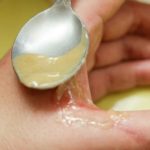by John Vibes: The psychedelic drug LSD is still considered a schedule 1 substance by the government…

which is a classification reserved for drugs that are addictive, dangerous and have no medical value. All of these substances tend to carry very extreme prison sentences. However, despite what the propaganda campaigns against it say, LSD is one of the safest drugs in existence. As more scientific studies are allowed to take place, it is being revealed that this substance can have a wide variety of applications for mental health.
In one recent study, researchers at the University of Zurich dosed 24 people with 100 micrograms of LSD and essentially found that these test subjects experienced a diminishing of their ego and reported that they felt more connected to the people around them.
Katrin Preller, a psychologist who worked on the study explained that “Our interpretation is that LSD reduces your sense of integrated self. In this particular case, the drug blurs the boundary between what is you and what is another person. It gets rid of this blurring between self and other, and the basic deficits in social interaction go away.”
Volunteers in the study were hooked up to brain scanners and engaged in simulated social interactions, some of them were given LSD, while others were given a placebo. Researchers noticed that the group given the LSD had different parts of their brains activated, and the portion of the brain typically thought to be associated with the ego was less active.
Preller pointed out that LSD could be used to treat mental disorders.
“We don’t currently have any medications that work to improve the social deficits in psychiatric disorders and one of the reasons for that is we have no real understanding of how social interaction works in the brain,” she said.
Distortions of self-representation and, potentially related to this, dysfunctional social cognition are central hallmarks of various psychiatric disorders and critically impact disease development, progression, treatment, as well as real-world functioning. However, these deficits are insufficiently targeted by current treatment approaches. The administration of lysergic acid diethylamide (LSD) in combination with functional magnetic resonance imaging and real-time eye-tracking offers the unique opportunity to study alterations in self-experience, their relation to social cognition, and the underlying neuropharmacology. Results demonstrate that LSD alters self-experience as well as basic social cognition processing in areas of the ‘social brain’. Furthermore, these alterations are attributable to 5-HT2A receptor stimulation, thereby pinpointing towards this receptor system in the development of pharmacotherapies for sociocognitive deficits in psychiatric disorders.
These possibilities have also been explored by a team of researchers from The University of North Carolina, Stanford University and the University of California, who determined that LSD could, in fact, be used to treat schizophrenia and depression.
The researchers used a process known as crystallography, in which atomic and molecular structure of certain interactions are studied. Specifically, the researchers were able to discover how LSD molecules interact with the serotonin receptors in our brain. Researchers plan on using this knowledge to develop an LSD based treatment for people with schizophrenia.
Psychonauts have long reported that their trips made them feel more in touch with nature, humanity and the world around them. The dissolution of the ego has been a common theme among in the counter-culture since the very early days. Terance McKenna, a pioneer of modern shamanism once said, “Life lived in the absence of the psychedelic experience that primordial shamanism is based on is life trivialized, life denied, life enslaved to the ego.”
Bill Wilson, the co-founder of the alcoholics anonymous program, actually considered promoting LSD as a tool for alcoholics to shake their addiction, and he specifically mentioned its ego dissolving properties. Wilson was a close associate with many early adopters of LSD and took numerous trips in controlled, scientific settings while he was involved with the AA program.
“I don’t believe [LSD] has any miraculous property of transforming spiritually and emotionally sick people into healthy ones overnight. It can set up a shining goal on the positive side, after all, it is only a temporary ego-reducer. The vision and insights given by LSD could create a large incentive – at least in a considerable number of people,” Wilson reportedly said after his first LSD trip in 1956.
Another recent study from the University of Cardiff showed that LSD actually unlocks portions of the brain that are not typically used.
Recent reports have pointed out that professionals in intellectually driven industries are taking psychedelic drugs to enhance their productivity and creativity. This may sound surprising to some, but this is nothing new – inventors, intellectuals, and scientists were actually taking LSD before hippies, and they continue to use the drug to this day.
Francis Crick, the scientist credited with discovering DNA, was taking psychedelics when he made his groundbreaking revelation. Another scientist and LSD user by the name of Kary Mullis advanced our knowledge of DNA even further with the development of the polymerase chain reaction (PCR) technique, a process that made it possible for scientists to better study how DNA works.
Steve Jobs has also stated on numerous occasions that taking LSD was one of the most important experiences of his life, and helped him think about things differently. Steve Jobs wasn’t the only technological pioneer who used psychedelics to boost creativity. Douglas Englebart, the inventor of the computer mouse, was also a psychedelic user.
Even the world of sports has seen extraordinary performances by athletes under the influence of LSD. The most popular case is that of Doc Ellis, the Pittsburgh Pirates pitcher who threw a no-hitter while he was high on LSD.
In the 1960’s, it was actually so common for professionals to use LSD that a study was conducted to see how the drug would affect their ability to solve problems relating to their work. In the study, which took place at the International Foundation for Advanced Study (IFAS) in Menlo Park, California, over 20 professionals from different fields were put in a room under the influence of LSD and told to re-approach problems that they had been unable to figure out previously. Not only did the participants find that the drug enhanced their creativity and problem-solving skills, but soon after the experiment, many of them went on to make incredible accomplishments in their sectors.
There are many different approaches to taking LSD to solving creative problems, with some people preferring to take small doses on a regular basis, while others prefer much larger doses. There is no right or wrong way, and each individual must choose their own path according to their own personality.









































